Ancient Nikopolis – Nike-polis, meaning “City of Victory” – was founded in 29 BC by the Roman Princeps (“First Citizen”) Octavian (63 BC-14 AD), who, two years later, became Emperor Augustus, the first emperor of Rome. The new “polis” (city) was established to commemorate his decisive victory at the Battle of Actium in 31 BC against the combined forces of Mark Antony, a rival Roman statesman, and Cleopatra, the last Ptolemaic queen of Egypt. This epic sea battle, fought in the Ionian Sea at the entrance of the Ambracian Gulf (Gulf of Actium), off the western coast of Greece, was a pivotal moment in history, marking the end of the Roman Republic and the rise of the Roman Empire.
Octavian’s victory brought to an end a long period of political upheaval, and the founding of Nikopolis adjacent to the site of this epoch-defining battle symbolized his power and the new era he ushered in. Strategically located on the southernmost promontory of Epirus, the free and autonomous city served as a key economic and administrative center in the region. It soon thrived as a hub of commerce and governance, forming a vital transportation and communication link between the eastern and western halves of the Mediterranean. Indeed, the city’s founding was as strategic as it was symbolic.
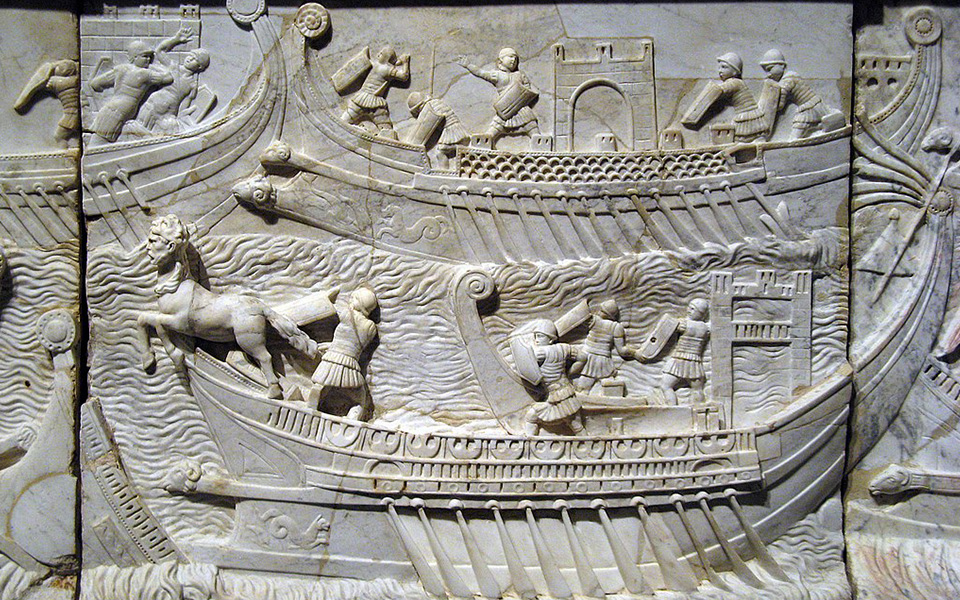
© Mark Landon / Public domain
Writing in the 1st century AD, the Roman author Pliny the Elder (23/24-79 AD) mentioned Nikopolis in his famous work, Natural History: “It was founded by Caesar Augustus after his victory over Antony and Cleopatra and was enriched with gifts and honors by all the cities of Greece.”
Today, visitors can explore Nikopolis’ well-preserved structures and witness ongoing archaeological excavations that continue to unveil the city’s rich history. Whether you’re a history enthusiast or a curious traveler, the archaeological site of Nikopolis and its accompanying museum offer a captivating journey through time, illustrating the grandeur and ingenuity of the ancient Romans and the indelible impact they had on the history and cultural landscape of Greece.
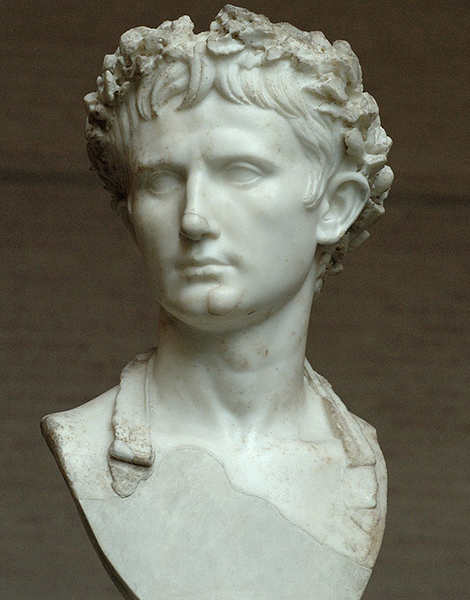
© Glyptothek Munich / Public domain
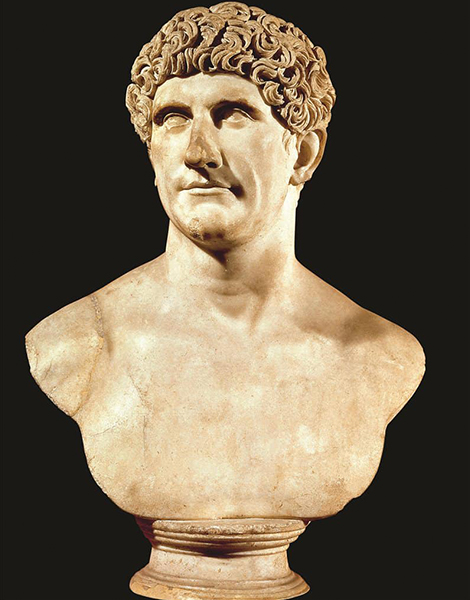
© Vatican Museums / Public domain
Exploring the Ruins
Located in southern Epirus, 8km north of the modern city of Preveza, the archaeological site of Nikopolis, now known as Palaea Preveza (“Old Preveza”), boasts a range of impressive architectural features from various periods, reflecting its importance and continuous occupation that extended into the Middle Ages. The entire site covers approximately 56 square kilometers, making it the largest ancient city in Greece. In 2014, the site was included on the tentative list of UNESCO World Heritage Sites.
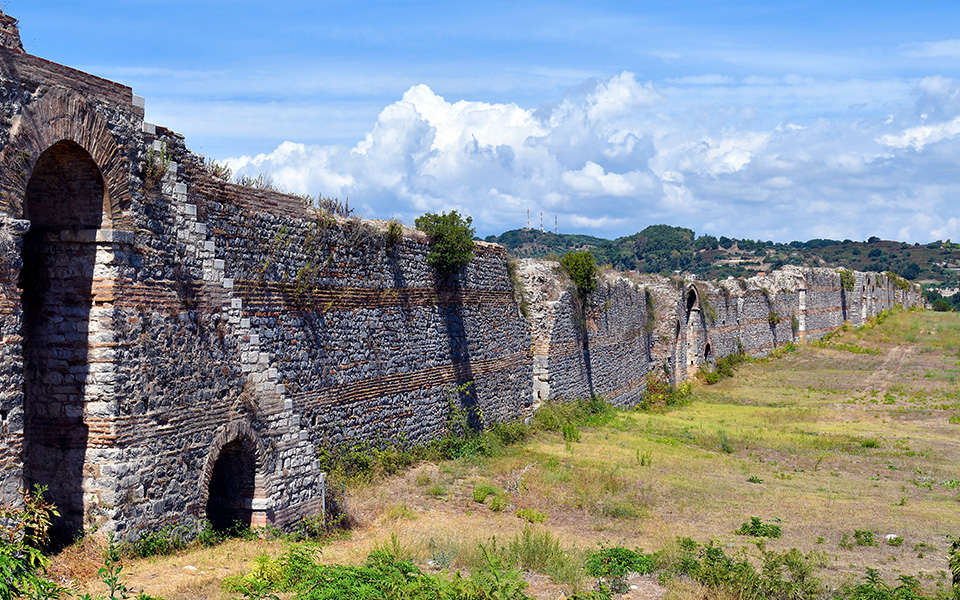
© Shutterstock
The City Walls
The city’s fortification walls are among its best-preserved structures. Initially constructed under Augustus towards the end of the 1st century BC, the walls were greatly expanded and reinforced during the early Byzantine period (from the 4th century AD), in response to political upheavals and the constant threat of attack from marauding Germanic tribes such as the Goths and Heruli.
These impressive fortifications encircle the city, spanning approximately 5km. The walls include notable gates and towers, which served both as defensive features and conspicuous displays of the city’s strength and prosperity. Notable sections of the surviving walls include the monumental western gate.
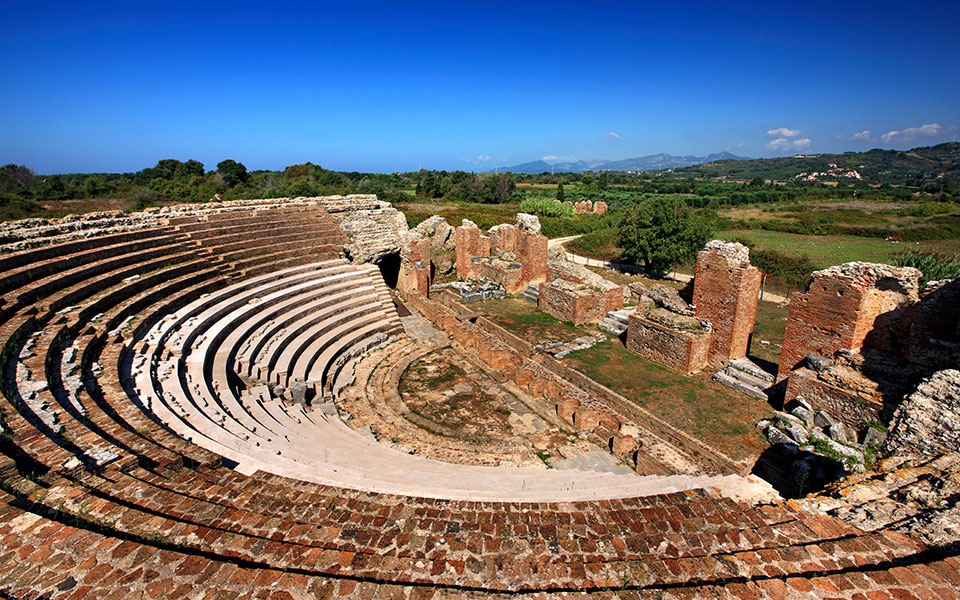
© Shutterstock
The Odeon
The Roman Odeon of Nikopolis, originally built during the reign of Augustus in the early 1st century AD, is one of the largest and most important structures of its kind in Greece. It lies at the center of the town, on the west side of the Early Christian wall, adjacent to the agora (forum). Designed to accommodate up to 1,600 spectators, it features a unique blend of Greek and Roman architectural styles, with a large “cavea” (seating area), semicircular orchestra, and “scaenae” (stage building).
The theatre was used for various public performances and gatherings, including dramatic plays, musical events, and political assemblies. It was frequently repaired and remodeled, remaining in use until the second half of the 3rd century AD.
Today, visitors can still see the well-preserved seating tiers, with the cavea divided into two distinct sections (“diazomata”) by horizontal walkways, and the scaenae. In the summer months, the Odeon, like many ancient theaters and performance spaces in Greece, hosts cultural events.
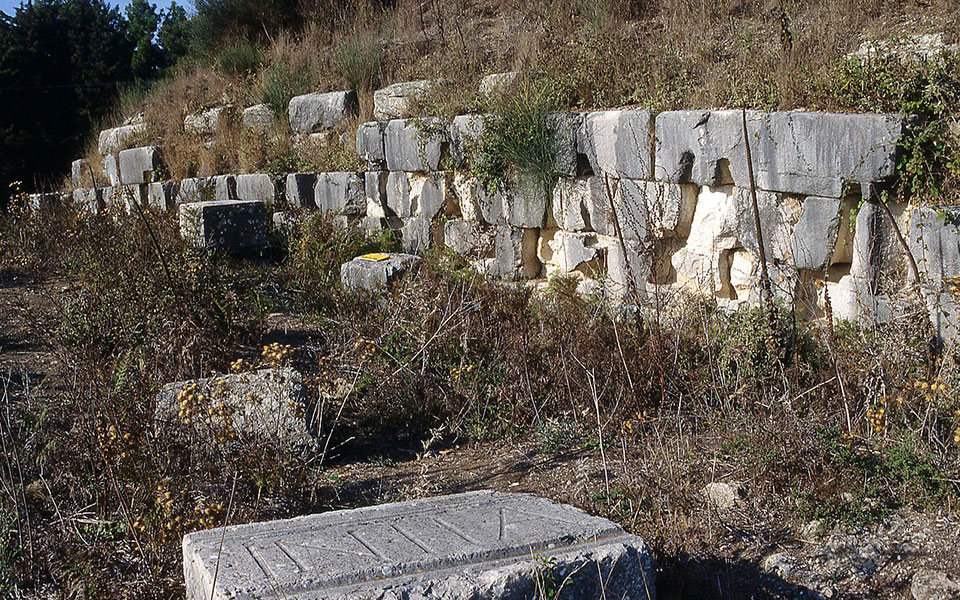
© Mark Landon / Public domain
The Monument of Augustus
One of the most significant monuments in Nikopolis is the Monument of Augustus, erected shortly after his victory at Actium. The monument, built on a hill just north of the new city, marks the site where he had set up camp prior to the battle in 31 BC.
The Monument stood on a raised platform and included a central altar surrounded by columns. It was originally adorned with bronze “rostra” (battering rams) taken from the captured warships of Antony and Cleopatra’s fleet – the spoils of war. The monument not only commemorated a crucial military triumph but also reinforced Augustus’s divine favor and political supremacy.
While much of the original structure has been lost to time, the foundations and some architectural elements remain, including sections of the terrace wall bearing the cuttings for the rostra.
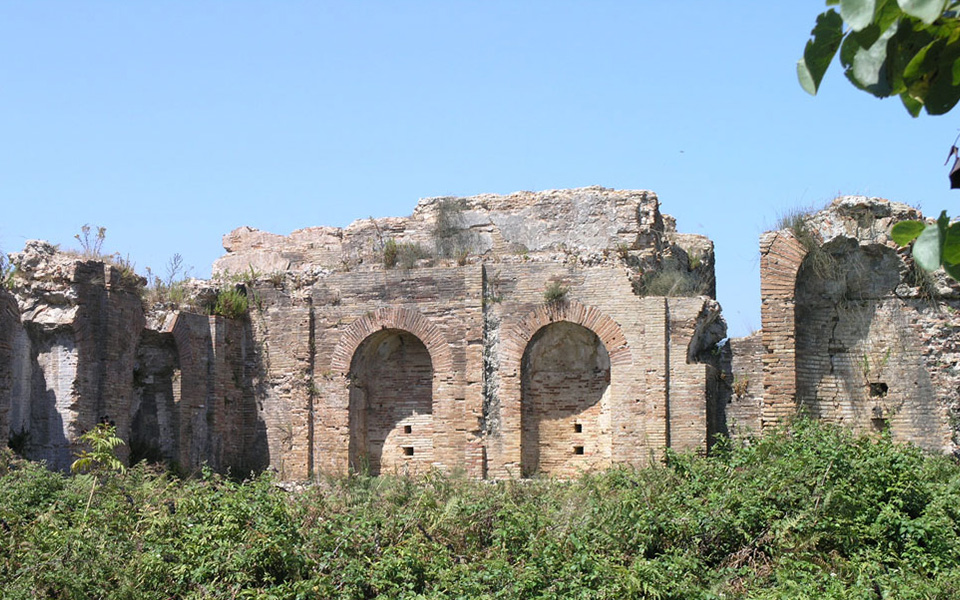
© Marsyas / Public domain
The Nymphaeum
A monumental fountain complex, the Nymphaeum was constructed in the late 1st century AD. It served both as a vital water supply and a decorative element of the city. Designed as a grandiose, multi-story structure adorned with elaborate architectural decorations, its façade originally featured a series of niches housing statues of gods, nymphs, and local dignitaries.
The fountain was part of a sophisticated water management system that included the city’s extensive aqueduct network. Water was channeled into the Nymphaeum from distant springs and reservoirs, flowing through a series of pipes and conduits. The complex system ensured a continuous and reliable water supply, essential for the city’s inhabitants.
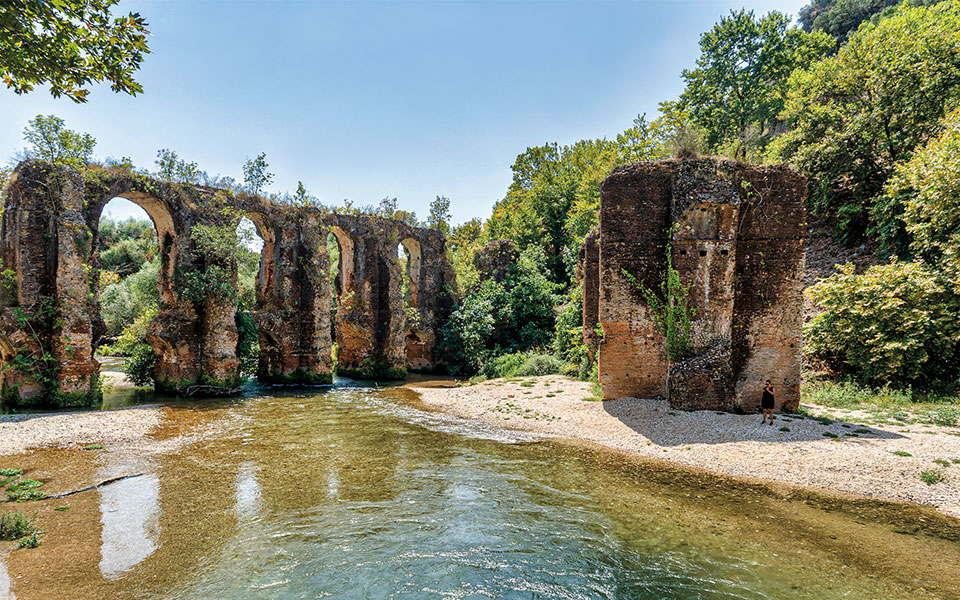
© Perikles Merakos
The Aqueduct
The aqueduct of Nikopolis, built in the early 1st century AD, was designed to supply the city with fresh water. Consisting of a series of arches (arcade) and tunnels, this engineering marvel stretched over 50km, originating from the springs of the Louros River.
The aqueduct bridge over the river near its source is one of the few remaining in Greece. The aqueduct originally carried water to the Nymphaeum, which included a header tank for distribution. Remains of the aqueduct, showcasing various construction styles, are visible in Thesprotiko, Louros, Stefani-Oropos, Archangelos, and Nikopolis. Recent research attributes its construction to Hadrian in the 2nd century AD. Ancient sources note that Emperor Julian repaired the aqueduct in the 4th century AD. It ceased operation in the mid-5th century, marking the end of its service to the city.
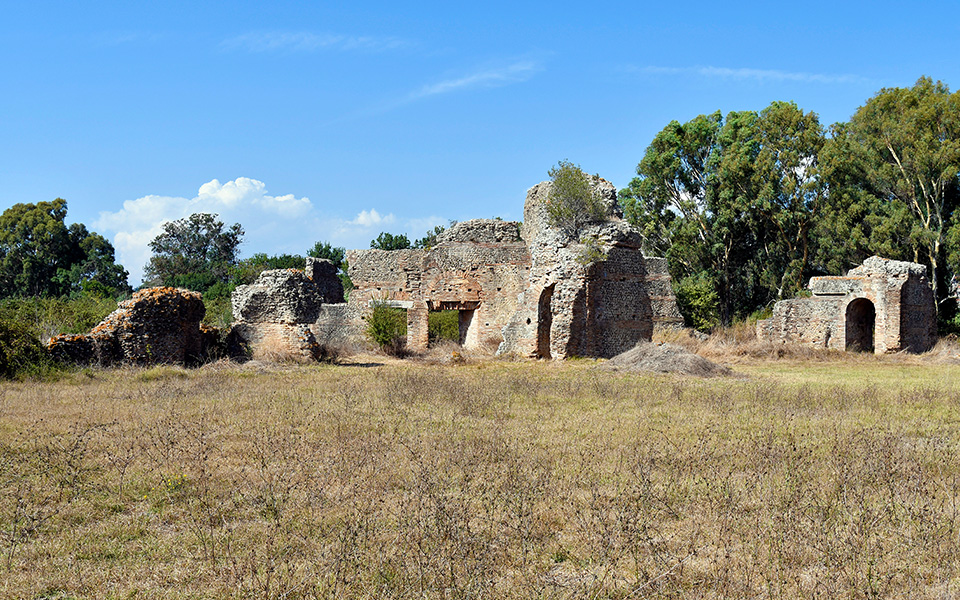
© Shutterstock
The Stadium
The stadium, situated within the revered grove known as the “Proasteion” in Nikopolis, was renowned for hosting the prestigious Actian Games, the “Actia,” modeled after the Olympics. Alongside the stadium stood the gymnasium, theatre, and hippodrome, forming a cultural hub. Dating back to the city’s inception, the stadium boasted a design reminiscent of Roman amphitheaters, featuring two semicircular ends, or “sphendones.”
Similar architectural styles can be observed in ancient stadiums like those in Laodicea (near Pamukkale, Turkey) and Aphrodisias (Geyre, Turkey). The stadium, strategically positioned, utilized the natural slope of a hill for its north side, providing seating for a substantial crowd of at least 10,000 spectators. Artificial embankments supported the remaining sides of the structure.
The southern sphendone featured residential quarters and amenities catering to athletes and spectators alike, including inns, shops, and lodgings, enriching the overall experience of attending events at the stadium.
Other architectural highlights at Nikopolis include the remains of the city’s public baths (“thermae”), the theater, the villa of Manius Antonius, which features some well-preserved floor mosaics, and the ruins of seven Early Christian basilicas.
Ongoing Archaeological Excavations
Archaeological excavations at Nikopolis are ongoing, revealing new insights and preserving the site’s rich heritage. The excavation of the Sebasteion, or “Temple of the Emperors,” has been particularly notable. Constructed in the late 1st century AD, this temple was dedicated to the worship of the Roman emperors, reflecting the imperial cult’s significance in Roman society. Researchers have uncovered detailed reliefs and inscriptions, shedding light on the city’s religious practices in the heart of the Agora.
Other studies have focused on the urban layout, residential areas, and public buildings, providing a comprehensive understanding of daily life in ancient Nikopolis. Conservation efforts are also in place to protect and restore the site, ensuring that future generations can appreciate its historical and cultural value.
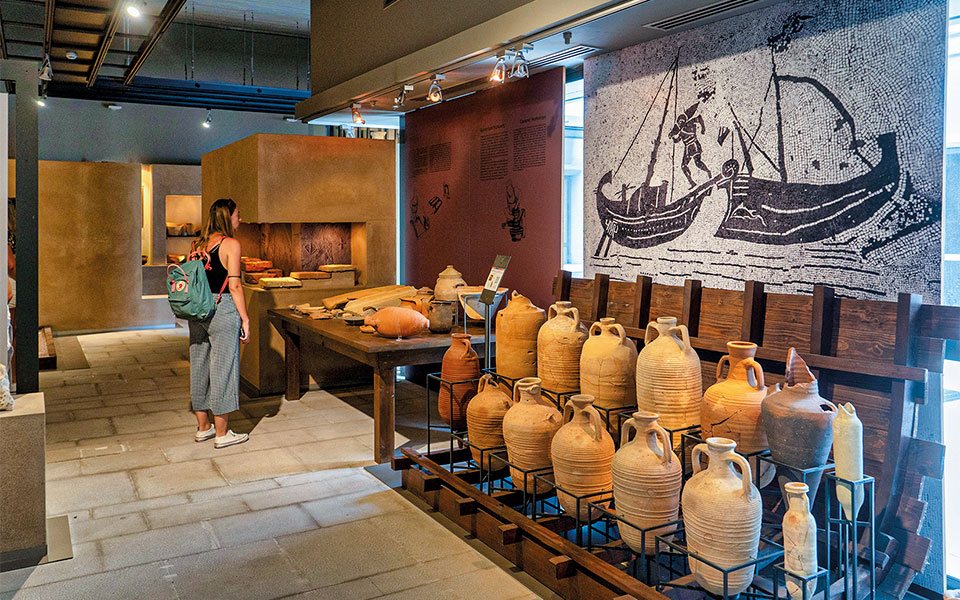
© Perikles Merakos
The Archaeological Museum of Nikopolis
The onsite museum is an essential stop for visitors. It houses a remarkable collection of artifacts excavated from the site, including statues, inscriptions, pottery, and everyday items that provide a window into the life of ancient Nikopolis. The museum’s exhibits are thoughtfully curated, offering detailed explanations and context that enhance your understanding of the archaeological site. Interactive displays and reconstructions help bring the ancient city to life, making your visit both educational and immersive.
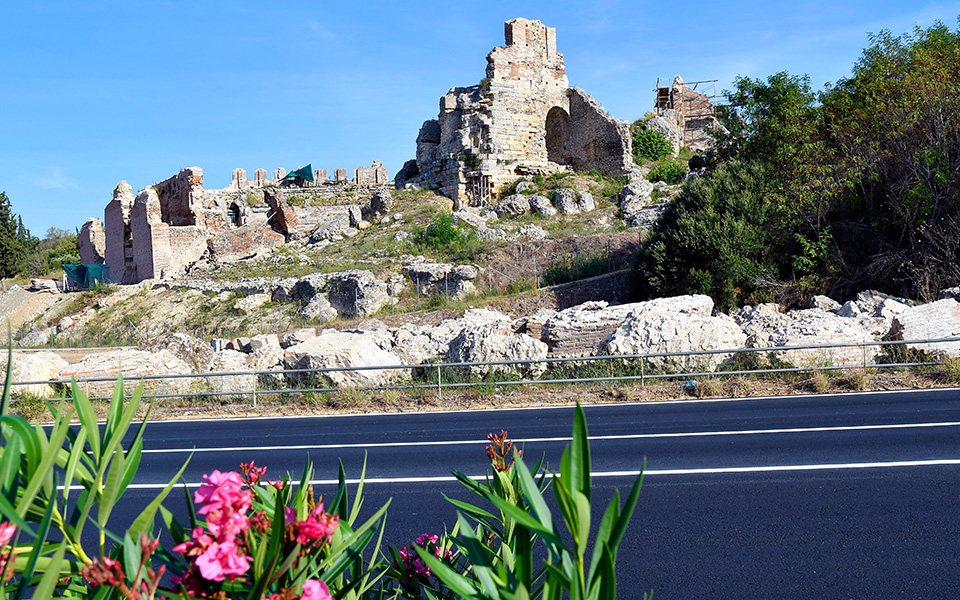
© Shutterstock
Getting to Nikopolis
From Athens
By Car: The journey from Athens to Nikopolis is approximately 350km and takes around 4.5 hours by car. Take the A8 motorway towards Patras, then continue on the A5 (Ionia Odos) north towards Ioannina. Follow the signs to Preveza and Nicopolis.
By Bus: KTEL buses run from Athens to Preveza, with a travel time of around 5-6 hours. From Preveza, you can take a taxi or local bus to Nikopolis.
By Plane: Fly from Athens International Airport to Aktion National Airport in Preveza. The flight takes about 1 hour. From the airport, Nikopolis is a short 10-minute drive.
From Thessaloniki
By Car: The drive from Thessaloniki to Nikopolis is about 320km and takes around 3.5 hours. Take the Egnatia Odos (A2) west towards Ioannina, then switch to the A5 south towards Preveza, following the signs to Nikopolis.
By Bus: KTEL buses run from Thessaloniki to Preveza, with a travel time of approximately 4-5 hours. From Preveza, you can reach Nikopolis by taxi or local bus.
From Preveza
By Car: Nikopolis is just 8km north of Preveza, about a 15-minute drive. Follow the signs for Palaea Preveza or Nikopolis.
By Bus: Local buses run regularly from Preveza to the site.
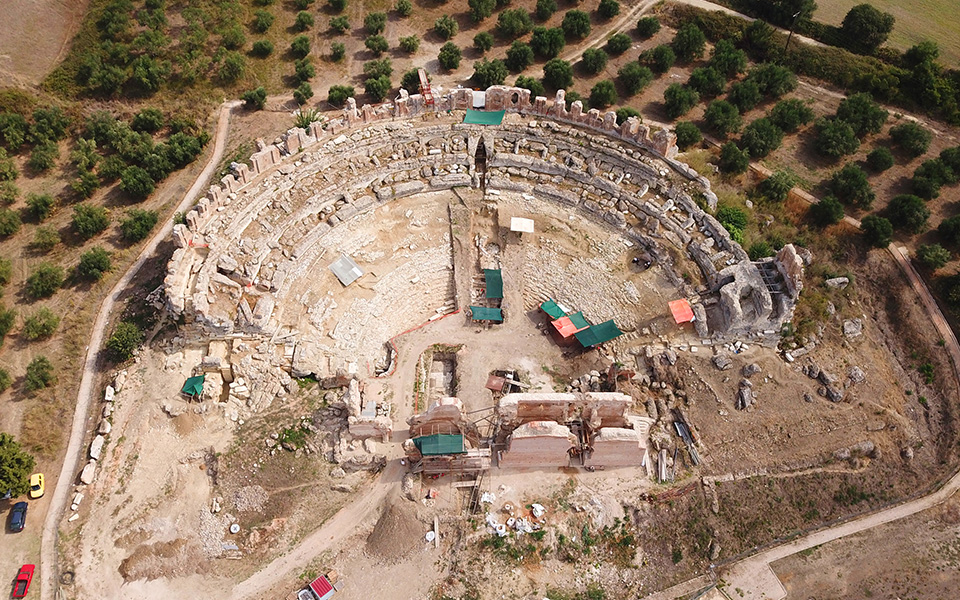
© Shutterstock
Visiting Tips
Allocate enough time: Set aside at least half a day to explore the site thoroughly. Nikopolis is extensive, and its numerous attractions deserve ample time to appreciate fully.
Wear comfortable walking shoes: The terrain can be uneven, and comfortable walking shoes will make your visit more enjoyable.
Visit the onsite museum: The onsite museum houses artifacts and provides additional context about the site, enhancing your understanding and appreciation of the ancient city.
Bring water and snacks: While exploring the ruins, it’s important to stay hydrated and energized, especially during the warmer months.
Guided tours: Consider joining a guided tour to gain deeper insights from knowledgeable guides who can bring the history of Nikopolis to life.
Check the weather: The best times to visit are during the spring and autumn months when the weather is mild. Summer can be very hot, making it less comfortable for extensive walking.












